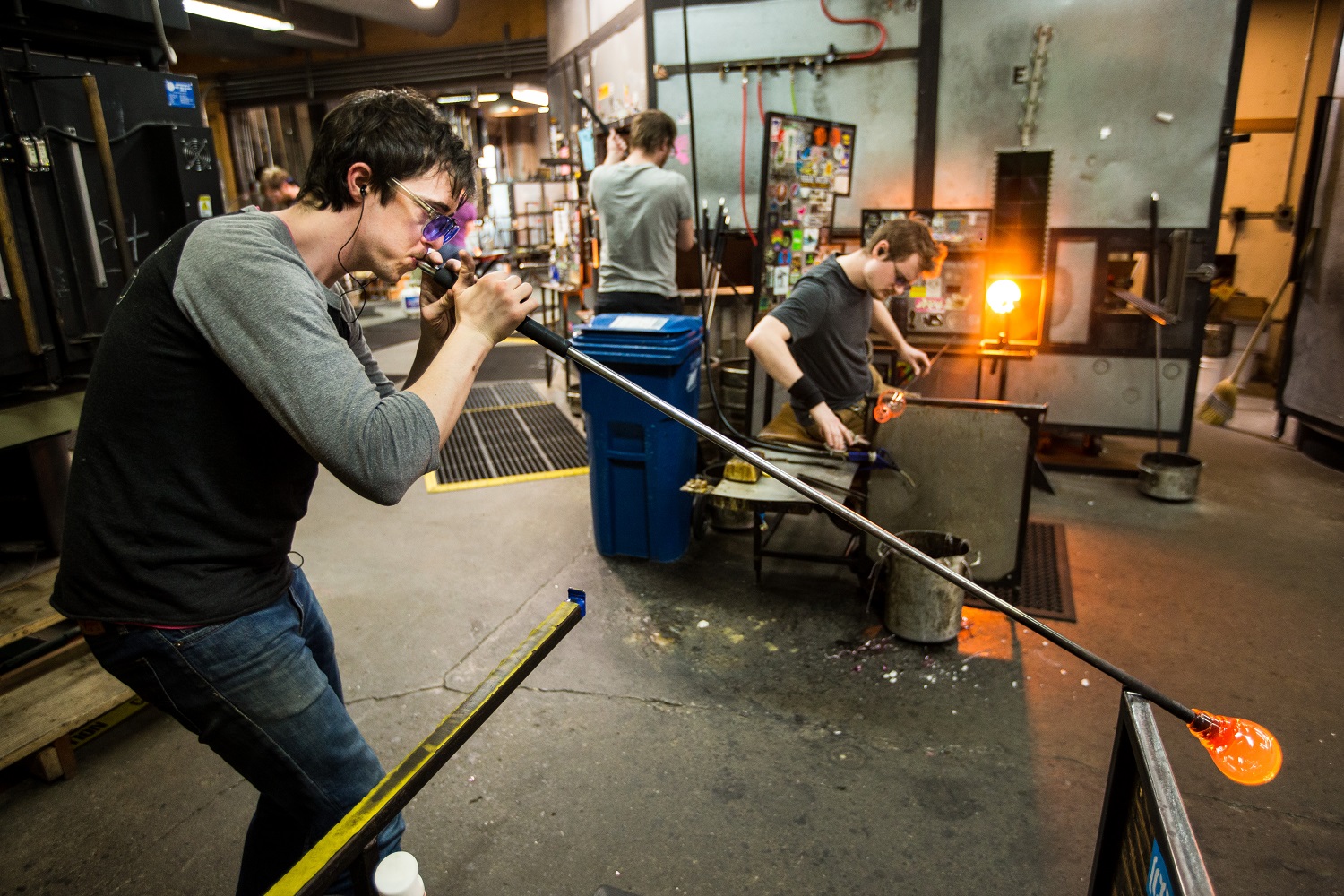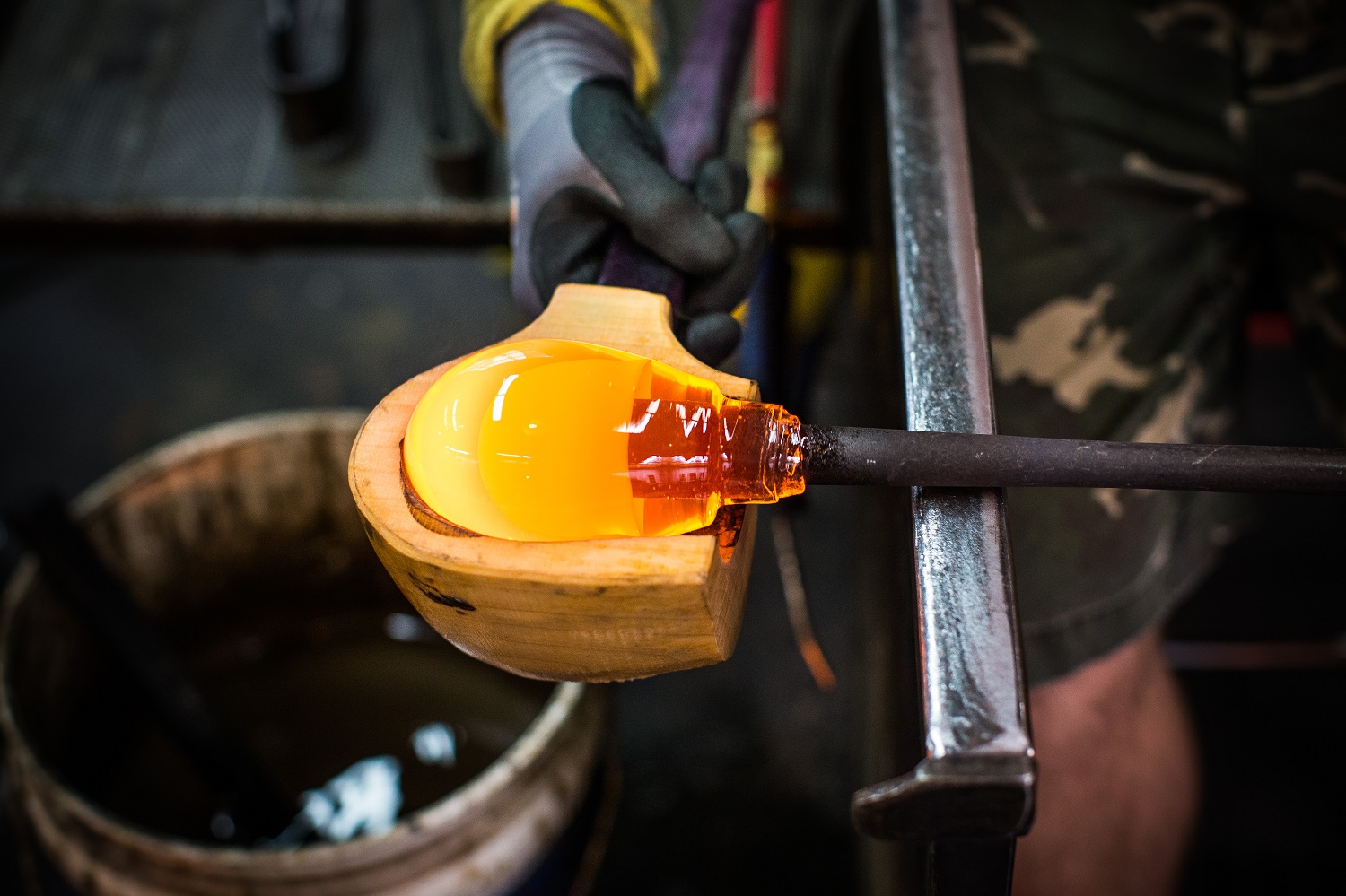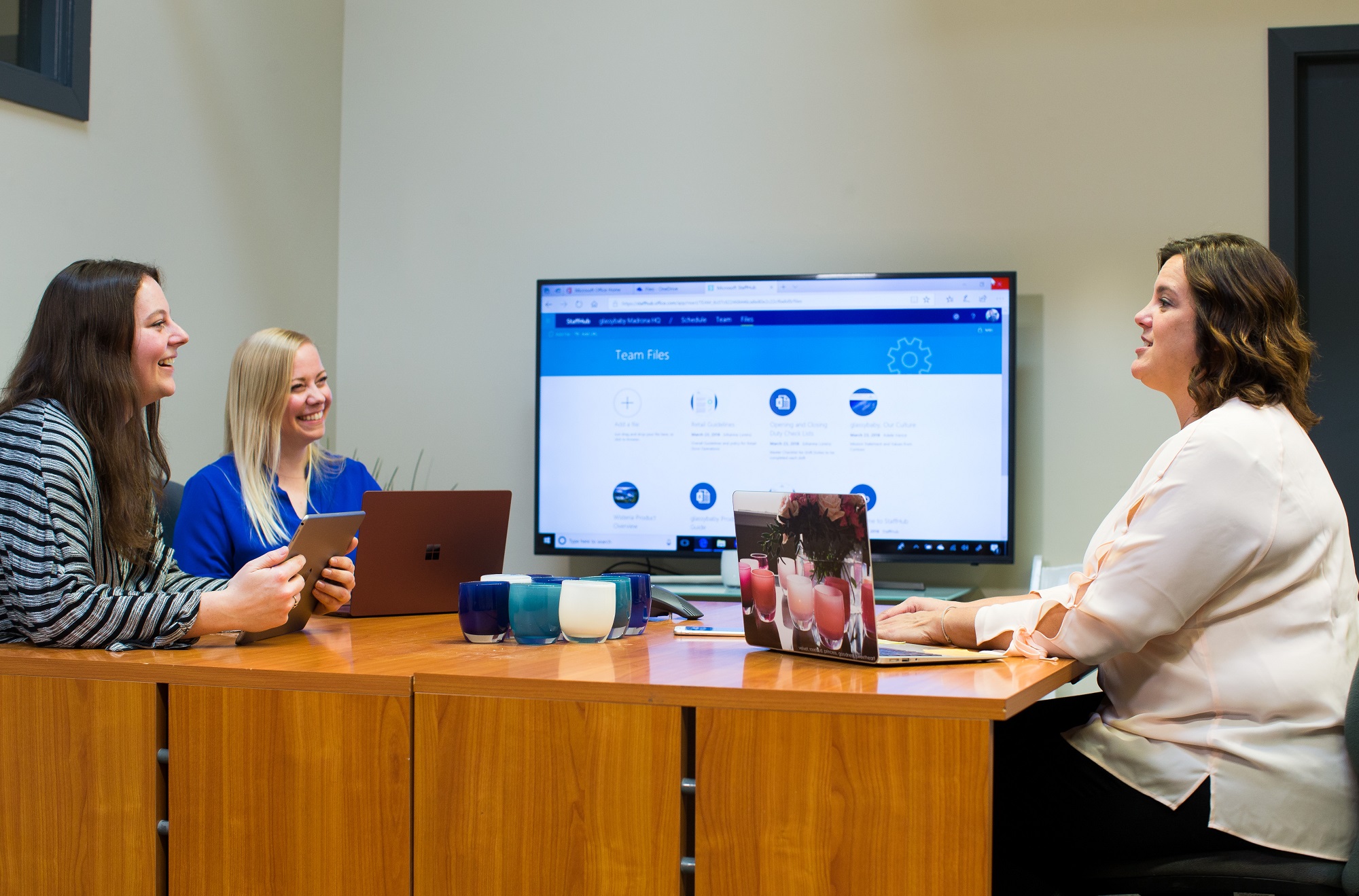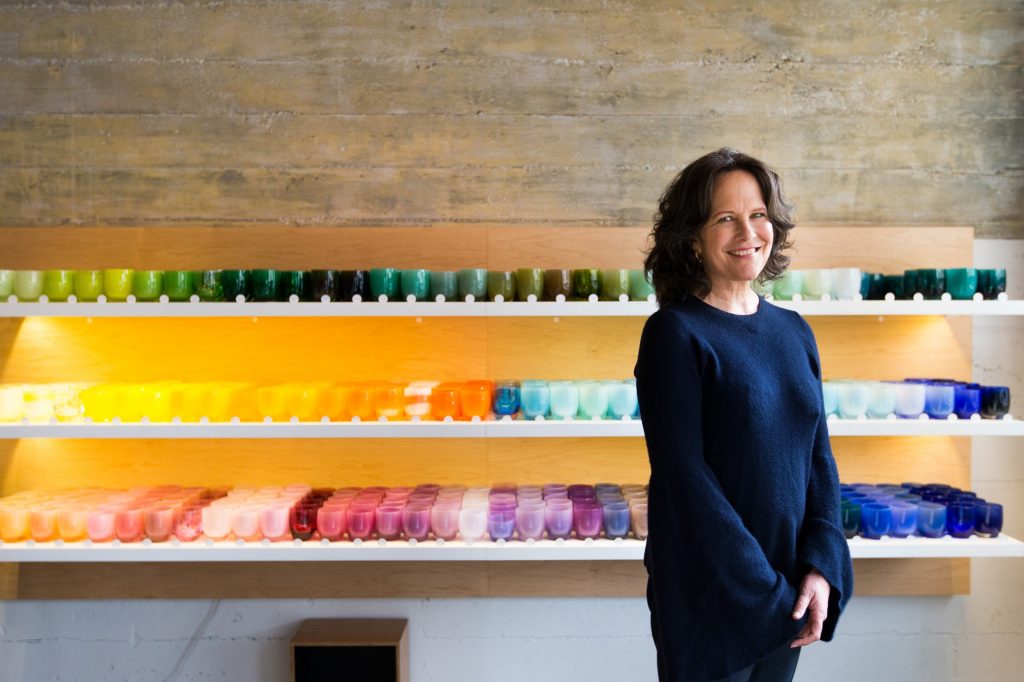In luminous color: How glassybaby helps people heal with handblown glass
Lee Rhodes was a mother of three toddlers when she was diagnosed with lung cancer in 1998. During that grueling, years-long time of her life, she often lit a candle in a handmade glass cup at night – a small gesture that provided enormous hope.
“It changed how I felt at the end of every day, having this colorful, bright, dancing light,” Rhodes says.
In 2001, the experience inspired her to start glassybaby, a Seattle-based company that makes and sells beautiful, handblown votive holders and gives 10 percent of all sales to charities. While undergoing chemotherapy, Rhodes had noticed that some patients missed appointments because they couldn’t find childcare, or didn’t have money for parking or bus fare. She knew she wanted her company to give hope to others.
“The power of giving at glassybaby is the heart and soul of who we are and what we do,” Rhodes says. “The way we measure how well we do every year is by how much money we give away. That is our absolute motivation.”

“At the same time, we have to stay in business. My CEO is constantly saying, ‘OK, that’s great, but remember we need to pay the bills and keep the lights on,” she says with a warm laugh.
Twenty years after Rhodes first lit candles as a cancer patient, glassybaby’s lights are definitely on. The company that began in her garage now has four stores in Washington, three in California and one in Oregon and is closing in on a lifetime total of $9 million in charitable giving.
Its formula for success combines the centuries-old craft of glassblowing with a modern workplace of new technologies for firstline workers – all infused with purpose and compassion.
“Being able to help people with our mission is what drove me,” Rhodes says. “It is the silliest business model in the world! I mean, giving away 10 percent of revenue. But the one thing we’ve never done at glassybaby is change lanes. It’s kept us authentic and real.”
The company makes and sells only two products: votive holders and drinking glasses. Each item requires the intricate teamwork of four glassblowers twirling, cutting and shaping molten glass heated in 2,300-degree furnaces in one of glassybaby’s two “hot shops.”
There’s no mass production or diverse line of housewares – only artisanal glasswork in hundreds of colors and the fact that glassybaby isn’t really about candle holders, but experiences.


Each luminous color has a unique name, like “true love,” “frog hunting” or “skinny dip.” Customers often buy glassybaby products as gifts to commemorate major events, from weddings and new babies to life-shattering illnesses and the death of a loved one.
“We represent what a flower represents,” Rhodes says. “We’re selling a connection or language you can use for people, when sometimes you don’t have the words. That’s why every single glassybaby has a name.”
The company’s nonprofit White Light Fund handles charitable giving with donations to hundreds of organizations that “help people, animals and the planet heal,” including the American Cancer Society, Conservation International and Retiti Elephant Sanctuary.
The culture of giving appeals to both customers and glassybaby’s 400 employees, who have helped the company grow. But growth has created new challenges in how to communicate and work together, especially among employees who don’t sit at a desk all day.
Among glassybaby’s 175 store employees, scheduling shifts and staying connected had become increasingly difficult, with printed spreadsheets stuck on a wall, shift changes on sticky notes, and messages spread across texts, emails, voicemails and handwritten notes. There was little accountability in who changed what and no single place for communication and collaboration. Many employees are also college students who frequently have to swap shifts to accommodate changing schedules.
“When you’re talking about 30 employees leaving notes all over the place, it gets crazy. It was a lot to track,” says Vicki Fredman, who managed one of glassybaby’s Seattle stores before becoming the company’s director of partnerships.
Last year, glassybaby began using modern tools from Microsoft to manage schedules, share information and chat with co-workers. The tools have helped employees work in a single, secure system and saved them from hours of tedious work.

“Scheduling is so much easier,” says Fredman. “Employees can stay on top of things just on their phones. They can start a chat, ‘Can somebody take my Friday night?’ and someone accepts. Then a manager accepts and it’s automatically on the schedule. No more messing around with it.”
The technology has fostered stronger teams, whether they’re chatting about shifts or new colors, and given employees more time to connect with customers. One of the most empowering parts of Fredman’s job is learning why customers come into a store – and responding with kindness or a hug.
“It’s not always happy. People buy glassybaby after someone has passed away or lost their pet,” she says. “Giving our employees that extra time with customers to hear their stories, and having customers feel like they’ve been heard and catered to – that’s powerful stuff.”
“That’s really what glassybaby is all about.”
Learn more about how glassybaby streamlines retail scheduling and communication with Office 365.
Top image: Lee Rhodes, founder of glassybaby. All photos by Dan DeLong.








